Garlic Report 2012-2013
Our garlic year is somewhat continuous but I usually consider it running from fall to fall. After garlic bulb harvest and curing we hand sort and package all our orders and leave them for our amazing mailperson who cheerfully picks up all our garlicky boxes. We have always had great service from the US post office; they are always friendly and cheerfully let us know about holidays so we don't put out garlic on the wrong days (time moves differently in the garlic field!)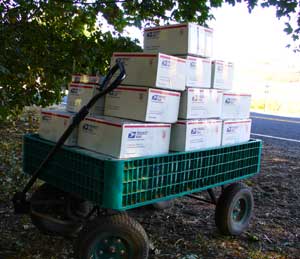
Picture: A cart full of priority mail boxes containing fresh seed garlic sits waiting for the mailperson to pick up. We package the garlic right before it is shipped.
After we finish mailing out most of our customers' garlic orders for the year it is time for us to plant and do soil testing. We do a soil test each year for major and minor nutrients and organic matter. This year we also tested for soil nematodes.
There are 'bad' nematode species that can cause plant death and 'good' beneficial nematode species. Beneficial nematode species can be parasitic on the larvae and pupa of plant pests or can break down organic matter in the field. We were happy to hear that our field was free of the 'bad' garlic bloat nematode and had high quantities of beneficial nematodes.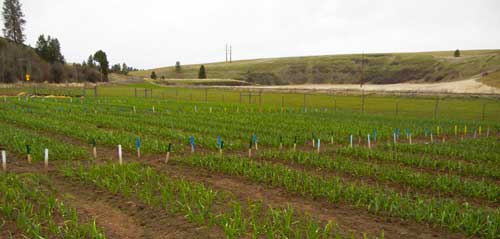
Picture: Garlic plants are about 2-4 inches high in early April. When garlic plants emerge depends on winter temperatures and the garlic variety. In our fields, Thermadrone and Phillips are always a lot slower to emerge than the other varieties.
Planting: In late October and early November we planted our garlic field. We have found that later planting produce bigger and healthier garlic plants and bulbs the next year. If you are new to planting garlic, please see our first time Garlic Grower's Guide for details on how to plant.
One of the most important parts of planting is to plan what varieties and how much garlic you want to grow. This is important even in the home garden. Since garlic is planted in the fall it is sometime easy to 'forget' about it or throw it in the ground without thought. Each year we sit down to decide what varieties we want to plant. Usually Susan wants to plant more varieties and Jane wants to plant less. Normally we compromise and than Susan sneaks in a few extra beds since she is the one that does the plowing. By harvest, Susan is always sorry she planted so much.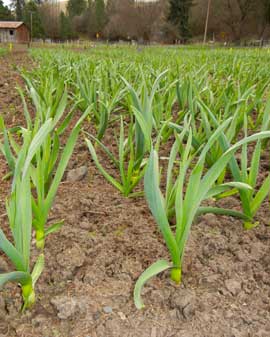
Picture: Young Georgian Crystal garlic plants.
This year we planted our new garlic varieties next to each other. This allowed us to notice some differences between the various varieties. For example, to the right are some early spring pictures of Georgian Crystal and Chesnok Red.
Observe the difference in the leaf growth habit between these two strains of garlic.
Georgian Crystal (top) has an upright growth habit while Chesnok Red (bottom) has spreading leaves that are almost horizontal at the bottom. 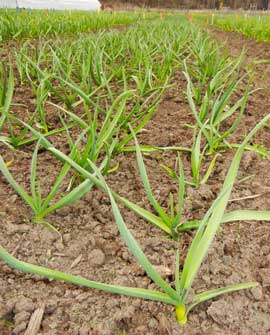
Picture: Young Chesnok Red plants.
Some other variety differences besides growth habit that you can observe are leaf thickness, plant color and leaf floppiness. Make sure to label your newly planted garlic cloves in the fall so you be able to check out the difference (and tell which ones taste the best to you!)
A note on my use of variety and strain; technically different garlics are considered 'subvarieties' or strains. However, I will interchangeably use strain and variety to refer to the different types of garlic. Garlic is also grouped into 'subfamilies' which I commonly refer to as families.
Garlic is a very hardy plant that can withstand extreme temperature. We often have late, early and mid summer frosts in the garlic field. 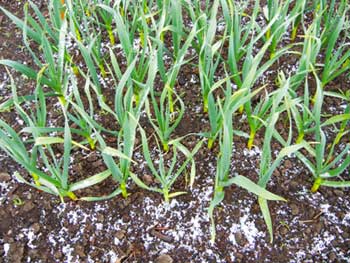
Picture: We had a small snowfall on April 30th that coated our new garlic plants
Like spring bulbs, garlic plants are resistant to cold weather and frosts. If spring temperatures are below freezing garlic may develop yellow tips on the tips of the leaves. This doesn't seem to affect garlic bulb size or plant vigor.
Spring frosts can 'heave' garlic cloves out of the ground. When this occurs I wait for a warm day and simply push the cloves back underground. Mulching can help prevent the rapid temperature changes that cause soil shifting.
In early summer hardneck garlic forms false seed heads known as scapes. Many people like to eat the scapes. If you harvest your scapes do so when they are young and tender.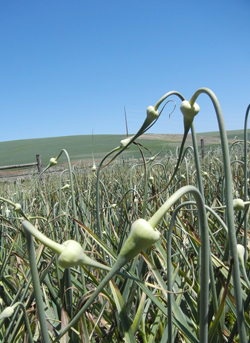
Picture: Scapes emerge at our farm in late June. Depending on your climate, scapes may appear earlier. These scapes are starting to straighten out. For the tastiest scapes, cut them off when they are small and curly.
We had a great harvest this year. Bulbs are very colorful compared to last year. Garlic varieties are harvested at different times. our harvest period can span a month. Unfortunately, some of our most popular varieties have the same harvest period. This means that we are out digging like crazy to get everything out of the ground. It is a delicate balance. If you harvest too late the bulbs lose wrappers, look bad and are poor storing. If you harvest too early, you lose bulb size and the cloves may be immature. 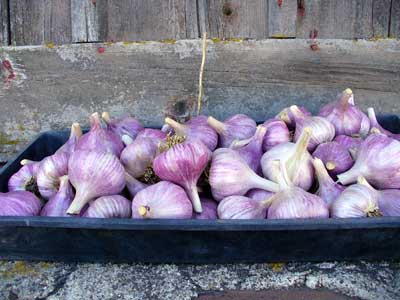
Picture: A nursery tray full of sweet purple Chesnok Red garlic bulbs sits outside the barn. This is an easy to grow and tasty hardneck garlic. It makes a beautiful bulb and has a lot of color.
We store our garlic bulbs in nursery trays. They hold around 10 pounds of bulbs and are aerated on the bottom.
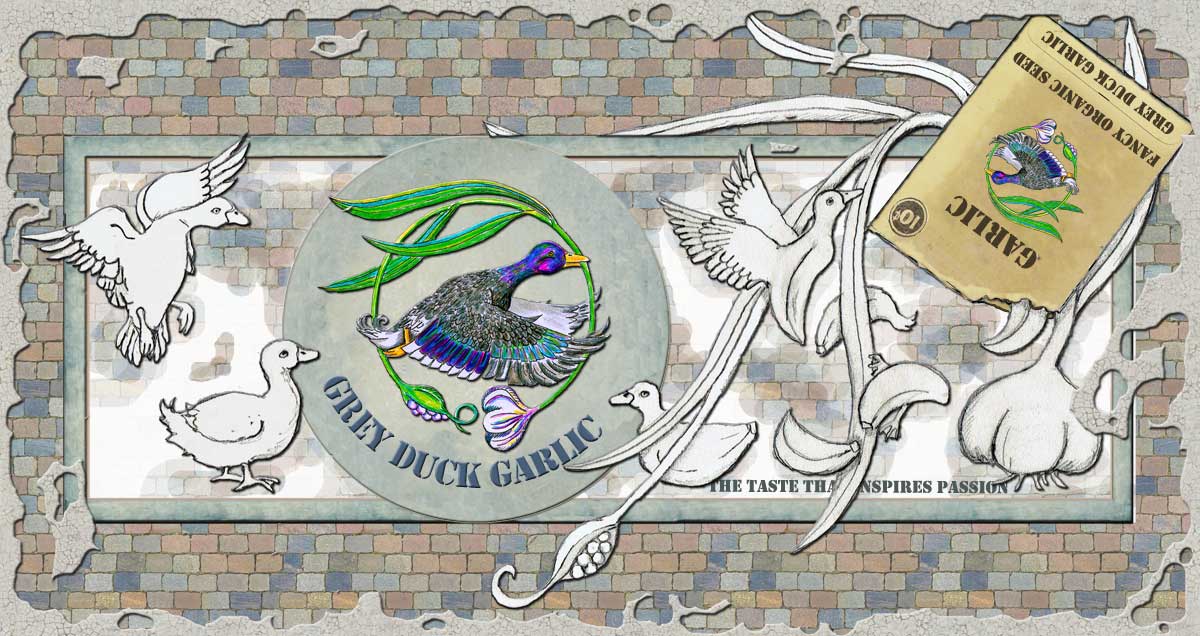
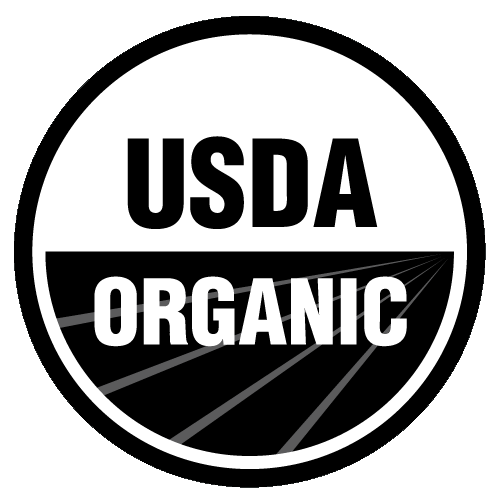 Why We Are Certified Organic
Why We Are Certified Organic